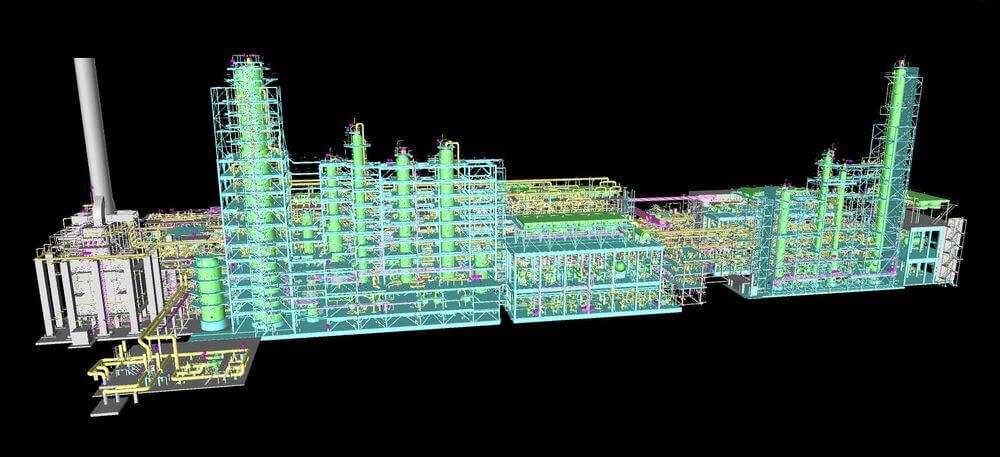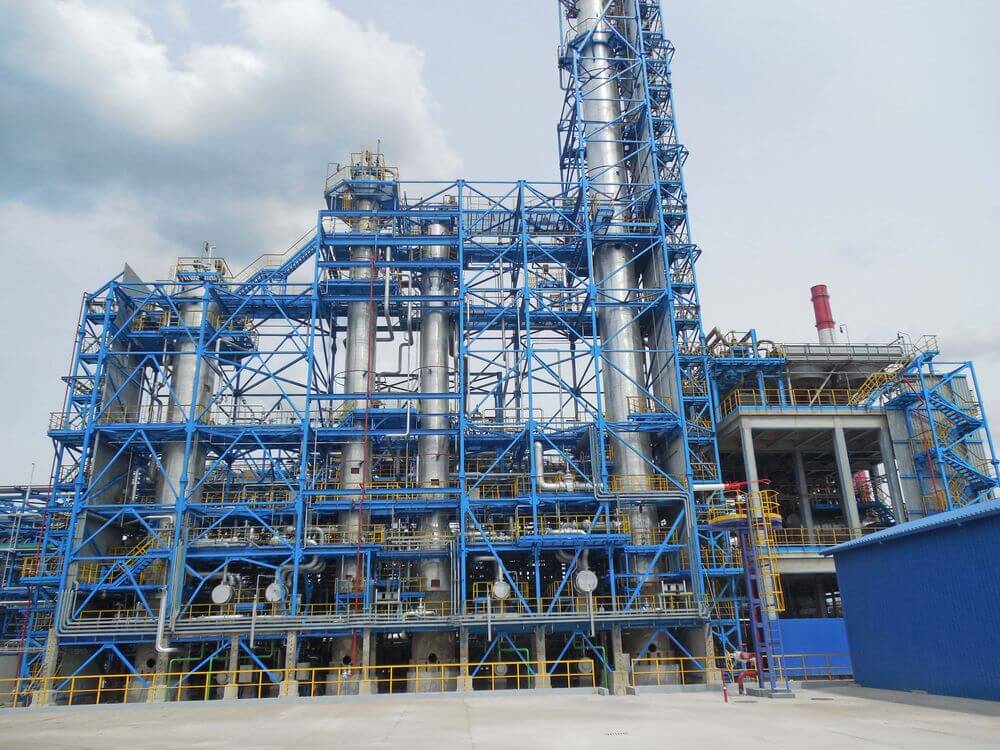The project consisted of the following main units:
- Block 100 of primary atmospheric distillation,
- Block 200 stabilisation and subsequent distillation,
- Block 300 gas fractionation,
- Block 400 iso-pentane separation.
Block 100 enables the production of gasoline, kerosene, diesel fractions and fuel oil. Block 200 meets the requirements for the preparation of feedstock for other units, i.e. light gasoline, naphtha and narrow fractions for the production of aromatic hydrocarbons. Block 300 is designed to separate liquefied gas. Block 400 separates the light isopentane components.
The primary objectives were to ensure stability of product supply during the necessary service outages, where the implementation of the AT-8 upgrade project and subsequently the vacuum unit at AVT-2 made it possible to carry out this work much more efficiently and without impacting the processing capacity of the plant.

The reconstructed unit has a capacity of 6,5 million tonnes of crude oil/year, while in addition 1,2 million tonnes/year of gasoline from other units of the plant was processed in unit 200. The production of the entire plant has thus increased to 12 million tonnes/year just after the start-up of the reconstructed AT-8 primary refining unit. The advantage of the upgrading of the bulk production is the implementation of technological solutions to increase the refining depth to 92%.
The complete process equipment was delivered in 2011-13, the customer started the construction and installation works in 2013, followed by the supervision and chief installation by our staff.
The unit successfully passed the tests in 2016. The commissioning and handover took place in December 2017.
UNIS supported the entire project by obtaining export financing. Our portfolio of banks is integrated both in terms of scale (including the largest global banks) and in terms of focus on project and export financing by the state insurance company EGAP.

ECOLOGY
The project met the main environmental aspects required by the World Bank's international environmental legislation and the requirements of the BAT Oil and Gas Refinery Reference Document (European IPPC Bureau, European Commission).
During the reconstruction of the unit, the following indicators were achieved:
- Improvement of the energy efficiency of the refinery (from 72% to 90-92%),
- Reduction of emissions of nitrogen oxides, sulphur oxides, volatile organic compounds (reaching the lower end of the range of limit values for mixed emissions from 100-600 mg/Nm3 to 220 mg/Nm3)
- Reduction in water quantity and pollution (water consumption below 0.09 m3 per ton of oil) Waste
- the site contained 966 tons of concrete rubble (recycling), 570 tons of scrap metal (sold), 170 tons of other rubble (landfill). Waste containing vanadium (0.247 t/year) was disposed by a specialized company.
FROM THE HISTORY OF THE AT-8
In 1971 the installation was reconstructed. Production capacity was increased from 6 to 8 million tonnes. The unit became known as AT-8, although in some years it processed 9.6 million tons of oil.
V roce 1971 byla instalace rekonstruována. Výrobní kapacita se zvýšila ze 6 na 8 milionů tun. Jednotka se stala známou jako AT-8, i když v některých letech zpracovala 9,6 milionu tun ropy.
Industrial abundance flourished until 1991. A week before the signing of the agreement to break up the USSR, on December 2, the fate of the AT-8 was sealed by a cruel and forced decision. The AT-8 was scrapped. In 1992, 1993 and 1994, the unit was briefly restarted.
The hope of revival appeared in April 2006. A review of the facility began. However, the invited experts made an unexpected verdict, out of two hundred technological parts only seven tanks were suitable for further operation. Ten years of inactivity were felt. The facility was dismantled. Subsequently, "Naftan" decided to reconstruct the building with our help.
The main facts for historians are the numbers, which are also present in the names of the factory designations, reflecting the production indicators. The reconstructed AT-8 is capable of processing 6 million tons of oil per year. However, the name of the famous figure-eight installation was retained as a tribute to the unit's production in previous years. Perhaps this is exactly the kind of case where statistical truth can be sacrificed for history.